Bruce Lee fitness isn’t just about building muscles; it’s about cultivating a powerful, agile body capable of unleashing incredible feats of strength and speed. Lee’s philosophy, a stark departure from traditional bodybuilding, emphasizes functional fitness that translates to real-world situations, making it a captivating and effective approach for anyone seeking to improve their physical potential.
This article delves into the core principles of Bruce Lee’s fitness philosophy, examining his training regimen, innovative techniques, and lasting impact on modern fitness trends. We’ll explore how his methods, rooted in martial arts, can be applied to contemporary workout routines, helping you achieve a level of fitness that’s both powerful and graceful.
Bruce Lee’s Fitness Philosophy

Bruce Lee’s fitness philosophy was a revolutionary approach that emphasized functional strength, speed, and agility, all crucial elements for his martial arts style, Jeet Kune Do. He believed in training the body to move efficiently and powerfully, rejecting traditional bodybuilding methods that focused solely on muscle size.
Bruce Lee’s Fitness Philosophy Compared to Traditional Bodybuilding
Bruce Lee’s fitness philosophy differed significantly from traditional bodybuilding approaches, which often prioritized building massive muscles for aesthetic purposes. He believed that excessive muscle mass could hinder speed and agility, crucial for his fighting style.
- Instead of focusing on isolating specific muscle groups, Lee’s training methods aimed to develop overall strength and power through functional exercises that mimicked real-life movements.
- He believed in training for speed and agility, incorporating explosive movements, dynamic stretches, and plyometrics into his routine.
- Lee also emphasized the importance of flexibility and range of motion, recognizing that a flexible body could move more freely and effectively.
Incorporating Bruce Lee’s Fitness Philosophy into Martial Arts Training
Bruce Lee’s fitness philosophy was deeply intertwined with his martial arts training. He believed that fitness was not just about building muscles but about enhancing the body’s ability to perform efficiently in a real-life combat situation.
- He incorporated exercises like squats, lunges, and deadlifts to build lower body strength and power, essential for delivering powerful kicks and punches.
- Lee’s training also included plyometric exercises like box jumps and jump squats to develop explosive power and agility, crucial for evading attacks and delivering swift counter-attacks.
- He emphasized flexibility and range of motion through dynamic stretches and yoga-like movements, allowing for greater mobility and control during combat.
Key Elements of Bruce Lee’s Fitness Regimen: Bruce Lee Fitness
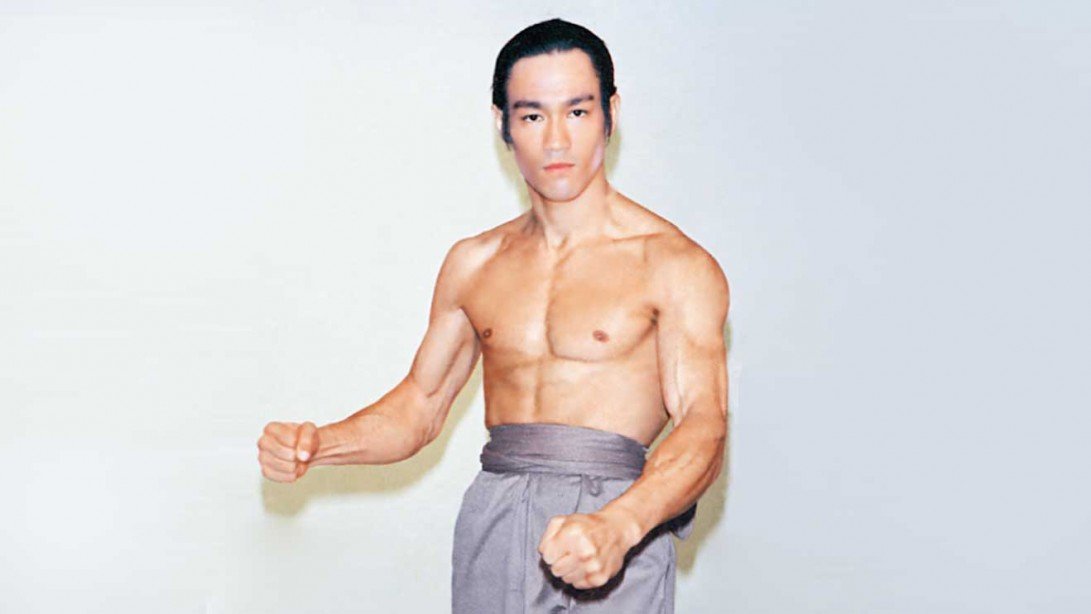
Bruce Lee’s fitness regimen was a unique blend of calisthenics, weight training, and martial arts drills, all meticulously designed to develop his physique and enhance his martial arts abilities. His training philosophy was based on the principle of “being like water,” meaning he believed in adapting and flowing with movement, constantly evolving his training methods to achieve peak performance.
Calisthenics
Calisthenics played a crucial role in Bruce Lee’s training, forming the foundation of his strength, flexibility, and endurance. He incorporated a variety of exercises into his routine, focusing on bodyweight movements that challenged his entire body.
- Push-ups:Bruce Lee performed various push-up variations, including standard push-ups, incline push-ups, and decline push-ups, to target different muscle groups and increase his upper body strength.
- Pull-ups:Pull-ups were another staple exercise in his routine, enhancing his back and arm strength. He often incorporated variations like chin-ups and wide-grip pull-ups to work different muscle fibers.
- Squats:Squats were a key exercise for developing lower body strength and power. Bruce Lee performed a wide range of squat variations, including traditional squats, jump squats, and pistol squats, to challenge his legs and core.
- Lunges:Lunges were an effective exercise for building lower body strength and flexibility. Bruce Lee performed lunges with different variations, including forward lunges, backward lunges, and walking lunges, to target specific muscle groups.
- Plank:The plank was a core-strengthening exercise that Bruce Lee incorporated into his routine to improve his core stability and balance. He held the plank for extended periods, progressively increasing the duration to challenge his endurance.
Weight Training
While Bruce Lee believed in the effectiveness of calisthenics, he also recognized the importance of weight training for building muscle mass and strength. He incorporated weight training into his routine, using a variety of exercises to target specific muscle groups.
- Barbell Bench Press:Bruce Lee utilized the barbell bench press to enhance his chest and triceps strength. He focused on proper form and controlled movements, ensuring he worked the muscles effectively.
- Barbell Squats:Barbell squats were another important exercise in his weight training routine, allowing him to lift heavier weights and build significant lower body strength. He used a variety of squat variations, including front squats and back squats, to target different muscle groups.
- Deadlifts:Deadlifts were a compound exercise that Bruce Lee incorporated to develop his back, legs, and grip strength. He emphasized proper form and technique, ensuring he lifted safely and effectively.
- Dumbbell Exercises:Bruce Lee also incorporated dumbbell exercises into his routine, utilizing dumbbells for a variety of exercises like dumbbell rows, dumbbell curls, and dumbbell presses. Dumbbells allowed him to target specific muscle groups and work on isolation movements.
Martial Arts Drills
Bruce Lee’s fitness regimen was heavily influenced by his martial arts training. He incorporated a variety of drills and techniques that developed his speed, agility, power, and coordination.
Bruce Lee’s fitness philosophy emphasized strength, speed, and flexibility, all of which contribute to a healthy and vibrant appearance. While you might not be training for martial arts, achieving that same level of physical well-being can help you feel confident and radiate a natural glow.
If you’re looking for a little extra help in that department, check out glow beauty bar for treatments that can enhance your natural beauty. Ultimately, Bruce Lee’s approach to fitness reminds us that taking care of our bodies is an investment in our overall well-being, both inside and out.
- Shadowboxing:Shadowboxing was a fundamental practice in Bruce Lee’s training, allowing him to refine his technique and improve his coordination without a partner. He performed shadowboxing sessions with intensity, focusing on precise movements and fluid transitions.
- Heavy Bag Work:Heavy bag work was another essential element of Bruce Lee’s training, helping him develop power and improve his striking technique. He used the heavy bag to practice different punches, kicks, and combinations, focusing on generating force and accuracy.
- Sparring:Sparring was an integral part of Bruce Lee’s training, allowing him to test his skills in a live environment and refine his strategy. He sparred with various partners, focusing on developing his reflexes, timing, and adaptability.
- Footwork Drills:Bruce Lee emphasized the importance of footwork in martial arts, incorporating a variety of footwork drills into his training. These drills helped him develop his agility, balance, and speed, allowing him to move quickly and efficiently in the ring.
Bruce Lee’s Training Methods
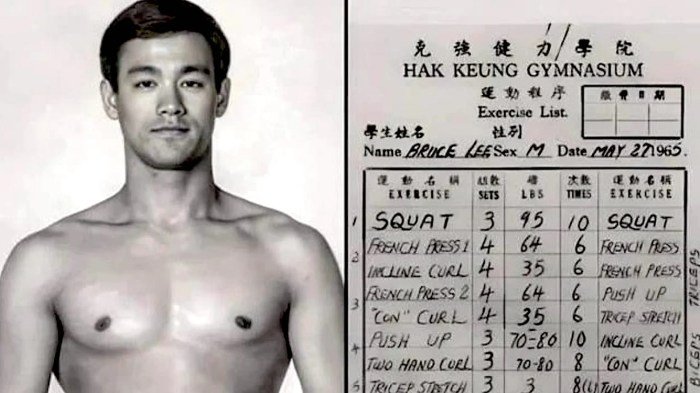
Bruce Lee’s training methods were as revolutionary as his martial arts style. He wasn’t content with traditional training methods; he sought to push the boundaries of physical and mental conditioning, constantly experimenting and refining his techniques. He believed in developing a holistic approach to fitness, incorporating strength, flexibility, speed, and mental discipline into his training.
Incorporating Martial Arts Skills into Fitness Training
Bruce Lee recognized that martial arts skills could be a powerful tool for fitness training. He believed that by training in martial arts, one could develop not only physical strength and flexibility but also speed, power, and precision. He emphasized the importance of using the entire body in every movement, engaging multiple muscle groups simultaneously.
This approach maximized efficiency and effectiveness, allowing for a more dynamic and powerful workout.
Sample Workout Routine Inspired by Bruce Lee’s Training Methods
Here is a sample workout routine inspired by Bruce Lee’s training methods, incorporating elements of strength, flexibility, and speed. Remember to consult with a healthcare professional before starting any new exercise program.
Warm-up
- Light cardio, such as jogging or jumping jacks (5 minutes)
- Dynamic stretching, such as arm circles, leg swings, and torso twists (5 minutes)
Strength Training
- Squats (3 sets of 10-12 repetitions)
- Push-ups (3 sets of as many repetitions as possible)
- Pull-ups (3 sets of as many repetitions as possible)
- Plank (hold for 30 seconds, repeat 3 times)
Flexibility Training
- Stretching, focusing on major muscle groups (5 minutes)
Speed and Power Training
- Shadow boxing (3 rounds of 2 minutes each, with 1-minute rest between rounds)
- Speed bag (3 rounds of 2 minutes each, with 1-minute rest between rounds)
- Plyometric exercises, such as box jumps and jump squats (3 sets of 10-12 repetitions)
Cool-down
- Light cardio, such as walking (5 minutes)
- Static stretching, holding each stretch for 30 seconds (5 minutes)
Bruce Lee’s Influence on Modern Fitness
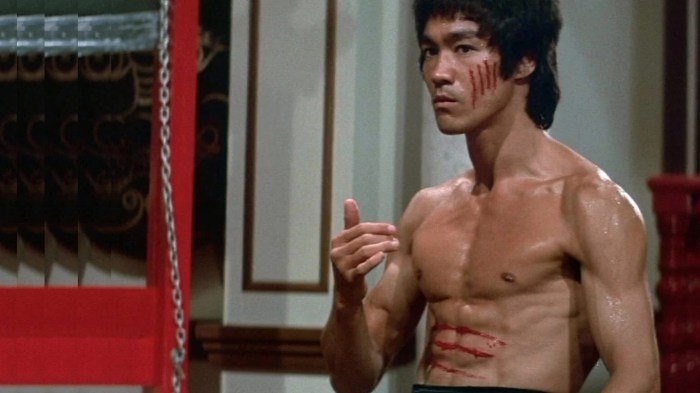
Bruce Lee’s impact on fitness extends far beyond his iconic martial arts skills. His philosophy and training methods, emphasizing functional strength, speed, and agility, have left an enduring mark on contemporary fitness trends.
Bruce Lee’s Influence on Modern Fitness Trends
Bruce Lee’s philosophy of “be like water” – adaptable, fluid, and ever-changing – resonated with the evolving fitness landscape. His focus on functional movement, rather than isolating muscles, has influenced modern fitness trends in several ways:
- Functional Training:Bruce Lee’s training routines emphasized exercises that mimicked real-life movements, mirroring his approach to martial arts. This paved the way for functional training, which focuses on strengthening the body for everyday activities and sports.
- High-Intensity Interval Training (HIIT):Lee’s training regimen incorporated short bursts of intense activity followed by brief recovery periods, a precursor to the popular HIIT workouts. This approach maximizes calorie burn and improves cardiovascular fitness.
- Bodyweight Training:Bruce Lee’s training emphasized using the body as resistance, making him a pioneer of bodyweight training. This method is now a cornerstone of many fitness programs, offering a convenient and effective way to build strength and endurance.
- Mind-Body Connection:Lee’s philosophy stressed the importance of mental focus and discipline in training. This concept has been incorporated into modern fitness trends, recognizing the crucial role of mindfulness and mental well-being in achieving fitness goals.
Comparison with CrossFit and Functional Training
Bruce Lee’s fitness philosophy shares common ground with contemporary workout programs like CrossFit and functional training, but also exhibits distinct differences:
- Focus on Functional Movement:Both Bruce Lee’s training and CrossFit emphasize functional movements, mimicking real-life activities. However, CrossFit often incorporates more complex and demanding exercises, while Lee’s approach prioritized efficiency and fluidity.
- Intensity and Variety:CrossFit and Bruce Lee’s training both prioritize high-intensity workouts. However, CrossFit emphasizes a broader range of exercises, including Olympic weightlifting, gymnastics, and metabolic conditioning, while Lee’s focus remained on martial arts-related movements.
- Mind-Body Connection:Both Bruce Lee’s philosophy and functional training emphasize the importance of mind-body connection. However, Bruce Lee placed greater emphasis on mental focus and discipline, drawing from his martial arts background.
Legacy of Bruce Lee’s Fitness Philosophy
Bruce Lee’s fitness philosophy continues to resonate with fitness enthusiasts today. His emphasis on functional movement, high-intensity training, and mind-body connection has left an enduring legacy, influencing a wide range of fitness trends:
- CrossFit:The popularity of CrossFit, with its focus on functional movements and high-intensity workouts, reflects the lasting influence of Bruce Lee’s training principles.
- Functional Training Programs:Numerous fitness programs, including those designed for specific sports or activities, incorporate functional training techniques, highlighting the enduring relevance of Bruce Lee’s approach.
- Bodyweight Training:The resurgence of bodyweight training, particularly in the form of calisthenics and parkour, is a testament to the enduring appeal of Bruce Lee’s minimalist approach to fitness.
Applying Bruce Lee’s Fitness Principles
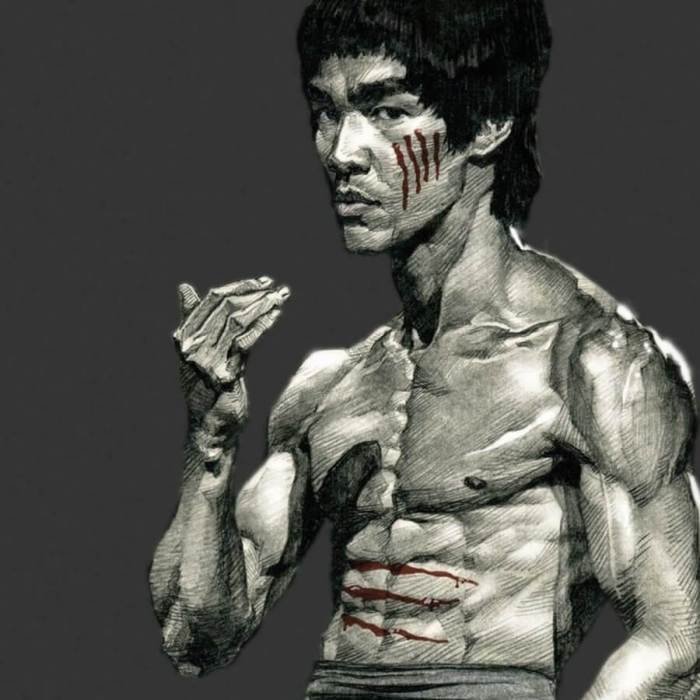
Bruce Lee’s philosophy of fitness extends beyond just physical training; it’s about cultivating a holistic approach that encompasses mental, emotional, and spiritual well-being. Applying these principles in your modern workout routine can lead to significant improvements in your overall fitness, strength, and agility.
Incorporating Bruce Lee’s Fitness Principles into a Modern Workout Routine
Bruce Lee’s fitness principles can be seamlessly integrated into modern workout routines. Here are some practical tips:* Focus on Functional Movements:Instead of isolating muscles, prioritize compound exercises that mimic real-life movements. Think squats, lunges, push-ups, and pull-ups.
Embrace Intensity and Efficiency
Minimize rest periods between sets and focus on high-intensity bursts of effort. This aligns with Bruce Lee’s belief in “maximum output with minimum effort.”
Bruce Lee’s philosophy of fitness emphasized efficiency and functional strength, principles that resonate with many looking for a convenient and effective workout routine. If you’re thinking of opening your own gym and sharing this philosophy, consider investing in an anytime fitness franchise.
With their 24/7 access and wide range of equipment, it’s a great way to build a business around the principles that Bruce Lee embodied.
Prioritize Flexibility and Agility
Include dynamic stretches and plyometrics to improve your range of motion and explosiveness.
Develop Body Awareness
Pay close attention to your form and body mechanics. This ensures you’re getting the most out of your workouts and minimizing the risk of injury.
Train with Purpose and Intention
Set clear goals and visualize your desired outcomes. Bruce Lee believed in the power of mental focus and visualization.
Seek Continuous Improvement
Challenge yourself regularly by increasing the weight, repetitions, or intensity of your workouts. Bruce Lee was constantly striving to push his limits and improve his skills.
Bruce Lee-Inspired Workout Variations
Here’s a table showcasing how you can apply Bruce Lee’s fitness principles to create dynamic workout variations:
| Exercise Type | Bruce Lee-Inspired Variation | Benefits | Notes |
|---|---|---|---|
| Push-Ups | One-arm push-ups, clap push-ups | Increased upper body strength and power | Focus on proper form and core engagement. |
| Squats | Jump squats, pistol squats | Improved lower body strength, power, and agility | Start with bodyweight and gradually increase the challenge. |
| Lunges | Jumping lunges, side lunges | Enhanced leg strength, flexibility, and balance | Maintain proper form and focus on controlled movements. |
| Pull-Ups | Chin-ups, explosive pull-ups | Increased back strength, grip strength, and upper body power | Use a pull-up bar or resistance bands to assist if needed. |
Examples of Applying Bruce Lee’s Fitness Principles, Bruce lee fitness
* Strength Training:Instead of traditional bicep curls, try incorporating Bruce Lee’s “One-inch Punch” technique, which emphasizes explosive power and speed. This engages your core and improves your overall strength.
Agility Training
Bruce Lee was a master of agility, and you can emulate his techniques by incorporating drills like “Footwork Drills” or “Shadow Boxing.” These exercises improve your balance, coordination, and reaction time.
Flexibility Training
Bruce Lee emphasized the importance of flexibility, which is why he incorporated stretching and yoga into his training regimen. This helped him maintain a full range of motion and prevent injuries.
Bruce Lee’s fitness philosophy emphasized speed, power, and efficiency, prioritizing functional movements over bulky muscles. This philosophy aligns with the principles of Up Health Systems , which focuses on holistic well-being, incorporating mindfulness and personalized care. By understanding these principles, you can unlock the potential of your body and achieve a level of fitness that embodies the spirit of Bruce Lee.
Mind-Body Connection
Bruce Lee’s philosophy of “Be like water” emphasizes the importance of fluidity and adaptability. This concept can be applied to your workouts by focusing on your breathing and body awareness.
Final Conclusion
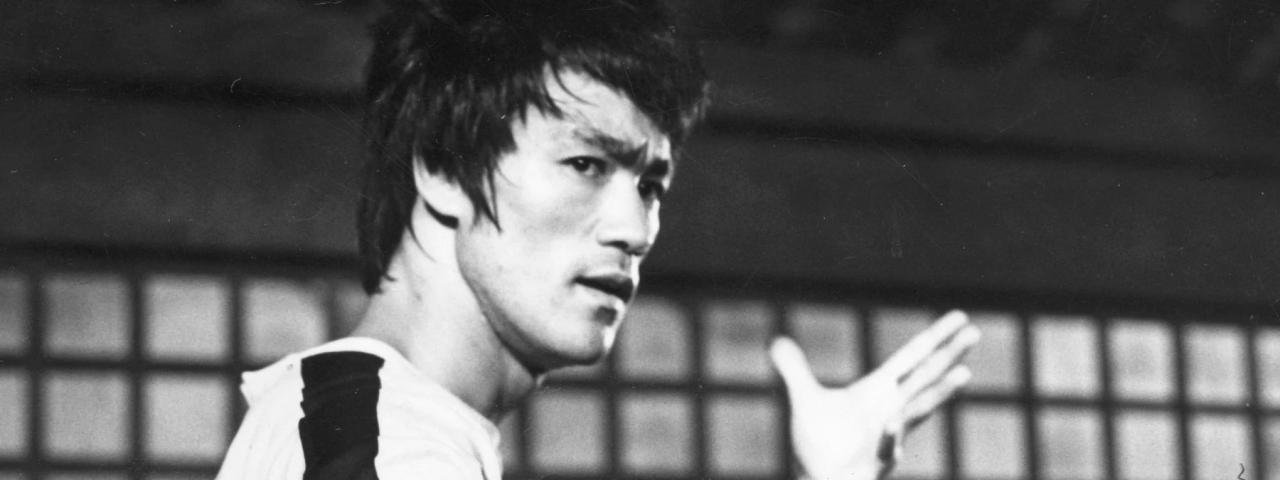
By embracing Bruce Lee’s fitness philosophy, you’re not just embarking on a workout routine; you’re adopting a mindset that prioritizes functional strength, agility, and speed. Whether you’re a seasoned athlete or just starting your fitness journey, integrating his principles into your training can lead to a more powerful, efficient, and ultimately, more fulfilling approach to fitness.
FAQ
What are the key differences between Bruce Lee’s fitness philosophy and traditional bodybuilding?
Bruce Lee’s approach focused on functional strength and agility, prioritizing movements that mimicked real-life situations, while traditional bodybuilding emphasizes muscle size and aesthetics.
How can I incorporate Bruce Lee’s training methods into my current workout routine?
Start by incorporating exercises that focus on speed, agility, and functional strength, such as plyometrics, shadow boxing, and bodyweight exercises.
What are some examples of Bruce Lee-inspired exercises?
Examples include the “one-inch punch” for power, shadow boxing for speed and agility, and the “intercepting fist” technique for quick reflexes.
Is Bruce Lee’s fitness philosophy suitable for everyone?
While Bruce Lee’s philosophy emphasizes high-intensity training, it can be adapted to suit different fitness levels and goals. Consulting a qualified fitness professional is always recommended.